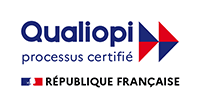The ICH (International Conference on Harmonisation) Q3D guideline establishes the methodology to be followed for the evaluation of elemental impurities in pharmaceutical products, including human drugs.
Thus, the ICH Q3D classifies elemental impurities into 4 classes, as follows
- Class 1: Elements that are toxic to the body and should not be used in the manufacture of drugs. The elements are as follows: Arsenic, Cadmium, Mercury and Lead.
- Class 2: Elements considered to be toxic to humans, but with a nuance as to the importance of the route of administration considered. Class 2 is itself subdivided into two classes, 2A and 2B, according to the probability of presence of the EI in the drug.
2A: There is a high probability of Class 2A impurities being present in the drug. Class 2A includes the following: Cobalt, Nickel, and Vanadium.
2B: The probability of presence in the finished product is less than those belonging to class 2A. Their toxicity is also less.
The elemental impurities are the following: Silver, Gold, Iridium, Osmium, Palladium, Platinum, Rhodium, Ruthenium, Selenium and Thallium.
- Class 3: elemental impurities with low oral toxicity. Nevertheless, the toxicity for other routes of administration remains a concern.
The elemental impurities found in this category are the following: Barium, Chromium, Copper, Lithium, Molybdenum, Antimony and Tin.
The ICH Q3D guideline has been applicable since June 2016 for new Marketing Authorization Applications (MA), and in January 2018 for drugs already on the market.









